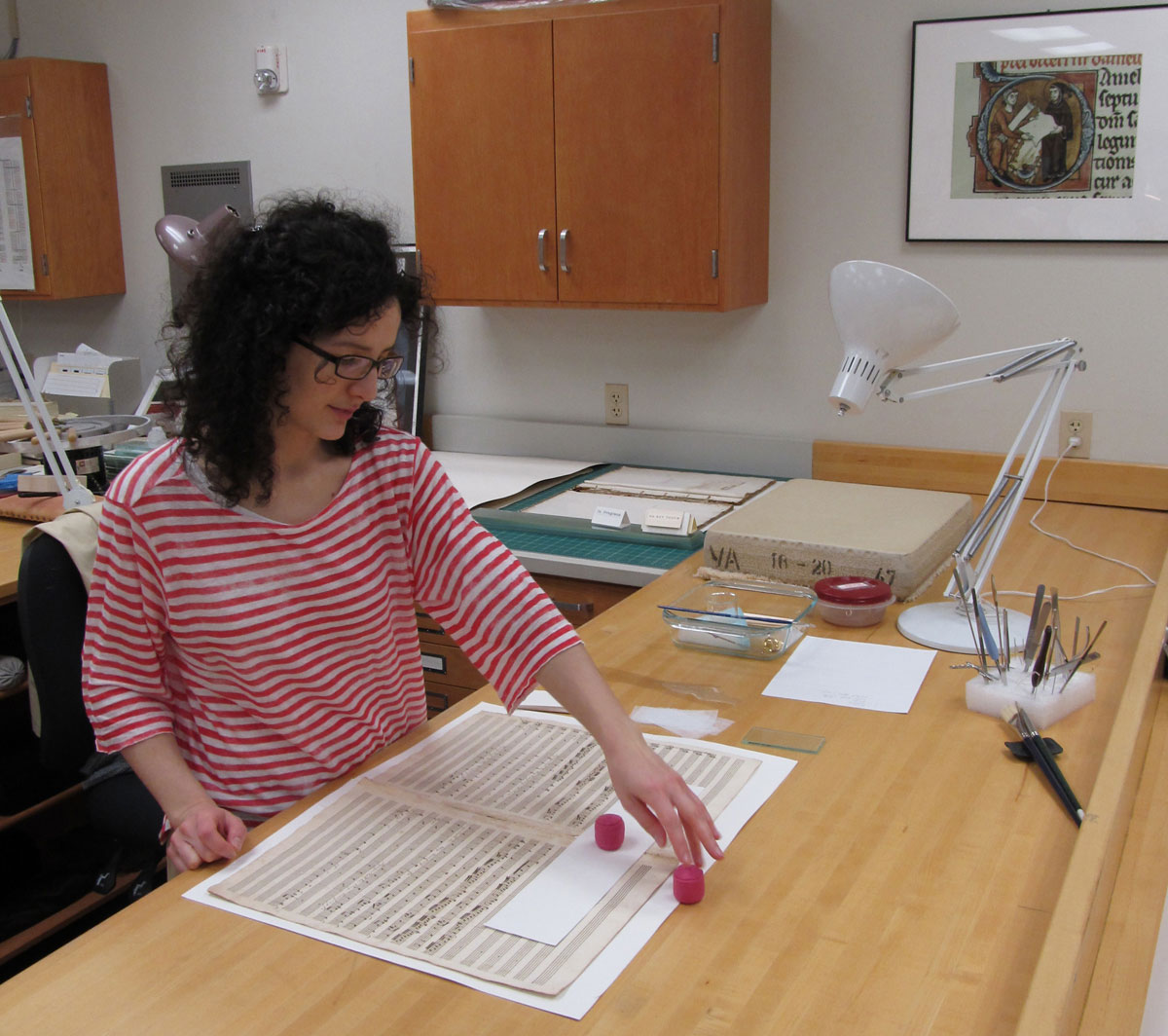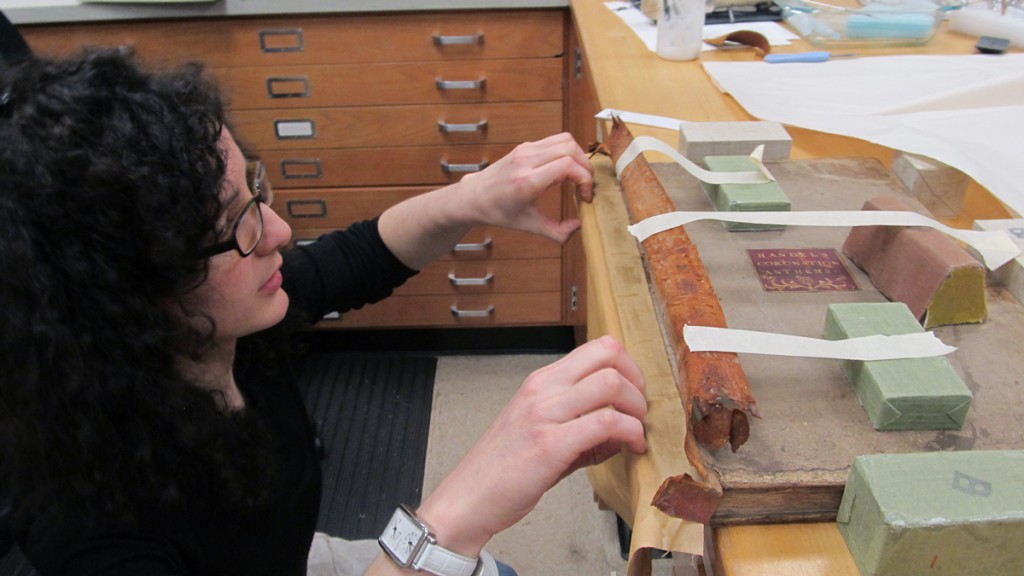
Justine Provino is a recent graduate of the Master of Conservation of Cultural Heritage program at the University of Paris I Panthéon-Sorbonne, in the Book and Paper Department with Professor Claude Laroque. From October 2014 through February 2015 she worked as an intern in the Ransom Center’s book lab with Senior Conservator Olivia Primanis, and in the paper lab with Conservator Heather Hamilton.

I have been practicing the violin since the age of five and have a Master’s degree in Medieval History, both of which have made me particularly interested in the conflict between the preservation of and access to music scores. My master’s thesis researches how conservation treatment procedures are determined by circulation policies of music scores in institutions affiliated with academic research in North America.

At the Ransom Center I worked on the conservation treatment of a manuscript that is the complete score of Händel’s Coronation Anthems, part of the Theodore M. Finney music manuscript collection. Georg Friedrich Händel (1685–1759) composed the Coronation Anthems in 1727 for the coronation ceremonies of King George II and Queen Caroline of England. This copy dates to ca. 1730 and is known to be in the handwriting of Handel’s principal copyist, John Christopher Smith the Elder (1683–1763). At the time of the coronation, the anthems were performed in the following order: Anthem I Let Thy Hand Be Strengthened, Anthem II Zadok the Priest, Anthem III The King Shall Rejoice, Anthem IV My Heart is Inditing. At present the music is performed in a different sequence starting with Zadok the Priest and ending with Let Thy Hand be Strengthened.
The manuscript was in poor condition when it came to the conservation lab, and conservators and curators decided to treat this document to ensure its availability for future researchers. The cover had partially detached from the text-block (pages). The paper and leather on the covers were chemically deteriorated and, consequently, fragile. The text block, consisting of handmade and machine-made papers, had been repaired several times in the past. The repairs consisted mostly of paper guards used to mend torn folds between pages. They were stiff and heavy and tore the pages as they were turned. Some of the sewing thread was broken, which resulted in loose pages. Oversewing, a sewing technique used in parts of the book, limited the opening of some pages.
Slideshow
The cover or binding was attributed to Thomas Sedgley (sometimes spelled Sedgeley), a well-known binder active ca.1720–1740 at the Bodleian Library in Oxford. Although Sedgley’s typical binding style is different from this one, a title piece adhered to the front cover is decorated with a tool that was in the binder’s collection. Because the provenance of the binding and the sequence of the Anthems are of interest to scholars, it became important to devise a treatment that would preserve evidence of how the manuscript’s binding evolved—that is, the placement of the pages and all parts of the cover.
We took the book apart to treat the cover and the 84 leaves of the text block. I applied poultices of methylcellulose to the old paper repairs, which softened the adhesive and allowed me to lift off the repair paper. I mended tears in the pages and reconnected detached pages to the text block with new guards using long-fiber, flexible Japanese paper. I sewed the text block on to new linen tape supports. A hollow tube made of long-fiber Japanese paper was adhered to the spine of the text block to attach the cover and to encourage the text block to open flat. Because parts of the leather spine were missing, the cover was put back together with the spine by inserting a new dyed-cotton cloth under the leather on both covers. Finally, I re-adhered the original spine leather and filled in areas of loss with a dyed long-fiber Japanese paper. The edges of the cover boards were consolidated with wheat starch paste.

Handel’s score—now fully conserved and safely available for research by music scholars, students, historians, and others—will inspire beautiful music for many more years to come. The manuscript is digitized and available online at this link for study.

















